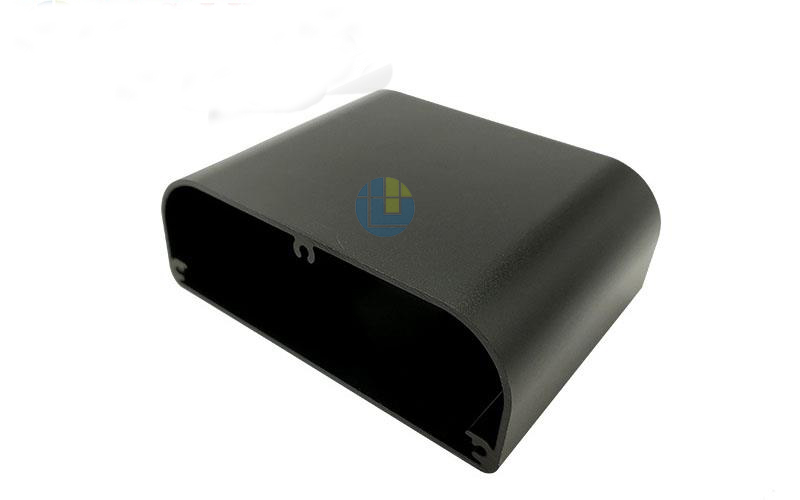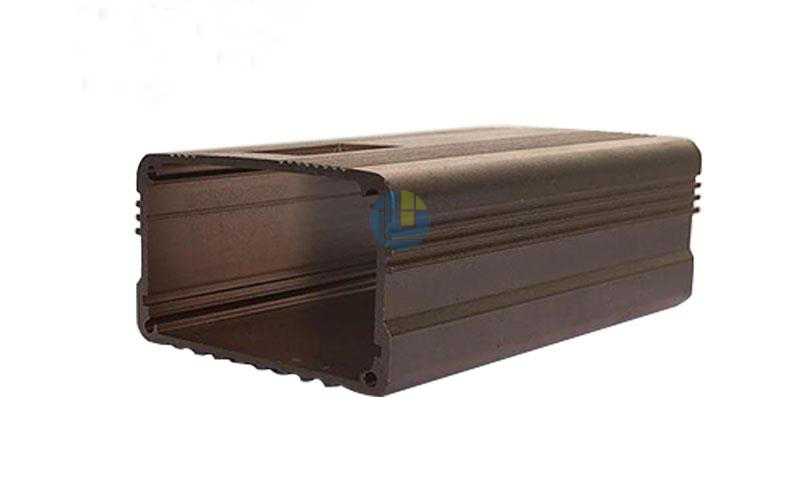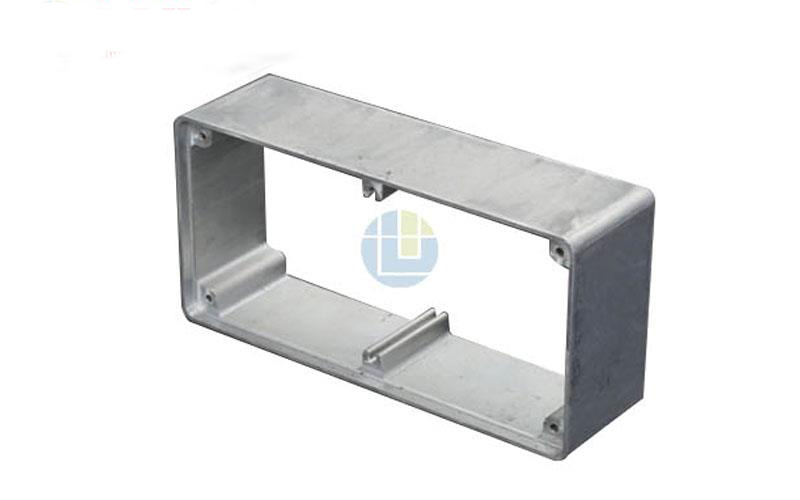How Much Do You Know About CNC Processing Parts?
- By:sjhmalu
- Date:30-11-2022
What are the factors that affect the quality of CNC machining precision parts?
Today, with the development of mechanization and automation, the use of machinery and equipment is becoming more and more extensive, but due to the lack of coordination or cooperation in some parts, problems are prone to occur. Such as raw material specifications, performance, material use, machine vibration, clamping pressure or loosening, elastic deformation process system, worker operation, testing methods, inspection personnel errors, etc., all have an impact on the quality of processed products. When we talk about the quality of working prototypes, here are 5 perspectives to focus on.
1. Operator
As CNC machine functions become more complex, the level of programming and operators varies widely. Combining the superb skills of humans with computer information technology can maximize the use of machines. To do this, machine operators must be familiar with equipment performance. If the operator does not know enough about the performance of the equipment, it may be improperly operated, which will accelerate the wear of machine parts and even cause damage to the machine.
Therefore, it will require a lot of repair costs and a long maintenance time. To restore the original precision of the equipment, CNC machine tool operators must understand and master the machine tool manual and its operation precautions, to achieve civilized production and safe processing; it is necessary to strengthen the skills training of all production and processing staff, and reasonably arrange primary and secondary processing positions. , to improve the quality awareness and work responsibility of personnel.
2. Machine
A complete CNC machining system consists of machine tools, workpieces, fixtures, and tools. Machining accuracy is related to the accuracy of the entire process system. Various errors in the processing system will manifest as machining tolerances in different forms under different circumstances.
CNC machine precision is an important factor affecting the quality of prototype parts. When the machine precision is poor, a certain series of parts are damaged or the gaps of each part are not adjusted properly, the prototype will have various defects during the CNC machining process. Therefore, we must not only choose the appropriate turning angle, appropriate cutting amount, and CNC machining method but also understand the influence of machine tool accuracy on the quality of CNC machining. The maintenance of the machine directly affects the processing quality and production efficiency of the prototype. All machines must be properly maintained to ensure working accuracy and prolong their working life. Usually, after the machine has been running for 500 hours, first-level maintenance is required.
3. CNC machining method
There are many kinds of CNC machining methods, and cutting machining is the most common one. During the cutting process, the workpiece is subjected to changes in force and heat, and the physical and mechanical properties of the metal material will also be slightly hardened, so the selection of the tool plays a crucial role.
In general, the material for making the tool should be selected according to the material of the workpiece to be machined. Otherwise, thorns related to the tool will be formed on the surface of the workpiece, which will easily increase the roughness of the workpiece and reduce the surface quality. In addition to tool factors, cutting environment and cutting conditions, such as cutting amount, cutting lubrication, etc., also affect the working fluid.
In the CNC machining process, the machining system is the general commander of the entire cutting process. All CNC machining processes are performed according to the system, so the precision and rigidity of the machining system are also one of the main factors affecting the machining quality.
There are two principles for the arrangement of processing technology:
Processing dispersion: complex parts are manufactured with multiple processes, which are broken down into multiple machines for processing.
Processing concentration: composite machine functions, such as CNC turning and milling, laser ultrasonic vibration processing, grinding, five-axis linkage, etc.,
All processes are completed by one machine. According to the structural analysis of the workpiece, the use of different processing methods is also an important factor affecting the processing quality.
4. Materials
Machining materials are generally divided into plastics and metals. Each material has its characteristics, and it is also important to select the right material according to the requirements and application of the workpiece during processing. Material consistency is better, otherwise, the quality of the same part may vary. When the hardness of the material is suitable, try to ensure that the material is not deformed. These are important prerequisites for assessing quality.
5. Inspection
After the machine has finished machining the workpiece, inspection is the last critical step before delivery to the customer. The inspection of mechanical processing generally needs to pay attention to two aspects:
·Inspection procedures – The inspection process includes the inspection process, as well as related regulations, systems, standards, etc. Generally speaking, the inspection process is to inspect the intervention and intervention methods in the production process, including first inspection, self-inspection, mutual inspection, and full-time inspection.
·Inspection method—-refers to how to inspect and inspect the standard. The inspection of machined parts is generally based on mechanical drawings, and the products are inspected through inspection instruments and measuring tools.
Traditional Machining Inspection vs. More Modern Machining Inspection:
In the process of CNC processing, to control the processing quality, it is necessary to understand and analyze the various influencing factors that the processing quality cannot meet the requirements, and at the same time take effective technical measures to overcome them.
With the continuous improvement of modern production levels, the requirements for the quality of machined products are also getting higher and higher. Only by taking comprehensive measures for quality control can we finally achieve the purpose of increasing the service life of the equipment and improving the service life of equipment, and taking into account economic benefits and energy saving in the processing process. At the same time, to ensure the quality of machining, to promote the long-term and stable development of the machining industry.

What is the custom machining process of CNC precision parts?
What are the ways of product customization?
Customers can obtain customized products in several ways:
·Independent development. For example, the customer already knows the part he needs, so he can create a drawing/3D model of it, then go to the machine shop and order it to be manufactured.
·Collaborative development. This is a great way to get custom-designed and machined parts when one is not entirely clear about the design or its prospects. This places certain demands on the machine shop, where the customer interacts and co-creates custom designs.
·Adaptive customization. This approach makes the manufacturer’s job easier but imposes many constraints on the customer. The method involves creating base parts, which can be modified according to customer needs. By using this approach, manufacturers can produce a large number of products with a degree of customization without spending too much time retooling the manufacturing process.
Machine shop requirements:
Considering that there are thousands of part types, each with its requirements for material and geometry, reducing lead time is the main and most difficult task that manufacturers have to solve. To reduce the time required to find materials, manufacturing Merchants must provide standard inventory for the widest range of materials.
What is a machined part?
Machined parts are everywhere in our daily life and you can understand the concept of a part, from a simple design, machining, and work done to every surface finish using various tools in precise locations. Proper technology or extensive experience is required to manufacture these custom components quickly and cost-effectively.
CNC machining of custom parts:
CNC machines play an important role in the flexibility of part creation. Only 10-15 years ago, to make parts with some complex surfaces, a lot of additional manufacturing had to be done, so complex parts were mostly mass-produced or used manual labor, which was long and expensive. Today, CNC programs replace all of these things. In addition to this, specialized computer-aided manufacturing systems have been developed that greatly reduce the time required to create such programs, and modern tooling mechanisms allow manufacturers to install a large number of tools on the lathe to change the tools needed during machining. The shortest time.
A range of standardized jigs and jaws have been developed to meet most of today’s machining needs, and these jigs typically consist of many individual elements that can be assembled on the table of a machine tool to secure the part during the machining phase. Of course, they are less accurate than dedicated fixtures, but modern measurement systems have eliminated this disadvantage.
Almost all types of modern CNC machine tools can be installed with a special probe, how to use this probe to measure the actual size and position of the fixed inventory, eliminating positioning errors? It can also be used to measure the actual dimensions of parts at certain stages of the manufacturing process to ensure that if any errors occur, they are detected and corrected early, with as little time lost as possible. custom cnc machining parts custom cnc machining parts

CNC precision parts processing characteristics and processing advantages
In specific applications, precision spare parts need to have higher precision and accuracy, to better highlight the craftsmanship and product quality, and these new products are more popular with customers. In general, CNC machining has important competitive advantages and advantages in the field of production and processing. The quality of its products is usually high, What are the advantages of CNC machining of precision parts?
First, CNC machining of precision parts is more efficient. CNC machining of parts can produce and process several machining surfaces. Compared with ordinary machining centers, it can save more manufacturing processes and improve efficiency. The product quality is also better than that of ordinary lathes, and the reliability is stronger.
Second, CNC machining precision parts has irreplaceable uses in the development of new products. Generally speaking, complex parts and components of different mechanisms can be produced and processed through code programming, and the correction and content update of design and production only need to be adjusted. The program code of the machining center can greatly shorten the development progress of new products.
Third, CNC machining of precision parts has a high level of mechanical automation, which greatly reduces the manual work intensity of operators. The operator does not need to control the whole process like ordinary lathes in the production and processing process, mainly to do a good job in the machining center. Careful observation and supervision, but the corresponding CNC machining technology are more difficult than ordinary lathes, so it requires higher technical staff than ordinary lathes.
What effect does anodizing have on machined aluminum parts?
Aluminum alloy is a very common metal in industry and life. In the process of processing aluminum parts, surface treatment is an important link, and there are various methods and effects. Sometimes, only one method can meet the requirements, and sometimes more than one method can be used to meet the requirements of the product. Among them, anodizing is the most widely used method.
1. Enhance the corrosion resistance of aluminum products
Anodizing can obtain an oxide film on the surface of aluminum products. The chemical properties of the oxide film are very stable and have strong corrosion resistance. Aluminum alloy profiles are a kind of corrosion-resistant metal, because aluminum is very active, and it is especially easy to chemically react with oxygen in the air to produce alumina, and alumina The film is transparent, so it is difficult for the human eye to see it. This thin layer of aluminum oxide film just isolates the air so that the aluminum substrate is no longer oxidized.
Then the naturally generated oxide film can play an anti-oxidation role, why do we need anodic oxidation? On the one hand, it is because the naturally formed oxide film is uneven, causing the surface of the aluminum alloy to have different shades and be ugly; on the other hand, the naturally formed oxide film is very thin, easy to be scratched, and has weak corrosion resistance. The artificial oxide film produced by anodic oxidation is uniform, dense, and corrosion-resistant.
2. Improve the adsorption capacity of aluminum products to materials
Aluminum products are chemically or electrochemically polished and then anodized to form a highly transparent oxide film on the surface. In addition, the oxide film is porous and has good adsorption capacity, which can effectively adsorb a variety of organic or non-polar dyes, as well as paints and organic films; this aluminum product can have a variety of bright colors, which not only increases the aesthetics of the appearance but also Can play a very good anti-corrosion effect. The surface of some industrial aluminum profiles needs to be painted, and the gaps on the surface of the anodized aluminum profiles have strong adsorption, which makes the painting more uniform and beautiful.
3. Improve the wear resistance of aluminum alloy parts
The anodic oxide film is not only corrosion-resistant but also very dense. The existence of this oxide film greatly enhances the wear resistance of aluminum products, and can effectively make aluminum products adapt to the working state of friction. The porous oxide film on the surface can absorb lubricants, to make the surface of industrial aluminum profiles more wear-resistant, such as the use of automotive engine cylinders, pistons, and other parts.
4. Thermal insulation
The thermal conductivity coefficient of the anodized film is much lower than that of the aluminum profile substrate. The aluminum oxide film can withstand a high temperature of up to 1500 degrees, while the aluminum profile substrate can only withstand a high temperature of 660 degrees. We know that the conductivity of aluminum is very good, but aluminum profiles need insulation on some occasions, and the chemical structure of the anodized film is a metal oxide, not metal, which has strong electrical insulation. Some aluminum materials require electrical insulation, such as capacitor dielectric layers, which can also be achieved by anodizing.
5. Realize electrical insulation of aluminum alloy parts
Aluminum alloy products must be coated on the substrate before electroplating. There are many ways to coat the surface of aluminum products, including electro-galvanizing, galvanizing, electroless nickel plating, and of course anodic oxidation treatment. The porosity of the anodized film can promote the effect of the electroplating process.
6. As a base material for aluminum plating
Aluminum alloy products must be coated on the substrate before electroplating. There are many ways to coat the surface of aluminum products, including electro-galvanizing, galvanizing, electroless nickel plating, and of course anodic oxidation treatment. Due to the porosity of the anodized film, can promote the development of electroplating public welfare.
To achieve electrical insulation of aluminum alloy parts, aluminum alloy products must be coated on the base material before electroplating. There are many ways to coat the surface of aluminum products, including electro-galvanizing, galvanizing, electroless nickel plating, and of course anodizing treatment, due to the porosity of the anodized film, the effect of the electroplating process can be promoted.

For 16 years, our Shijun Hongmao Aluminum Co., Ltd. has been focusing on the customized production of aluminum profiles for CNC processing parts. The company has complete machinery and equipment, including CNC deep processing machines, double traction extrusion equipment, 6.5-meter profile processing centers, vertical processing centers, and horizontal processing. Center, sawing machine, punching machine, double-head sawing machine, drilling machine, tapping machine, American three-coordinate detector, Swiss TESA altimeter, etc. The CNC-processed aluminum profile parts we produce are widely used in new energy vehicles, 3D printers, automatic assembly line production equipment, electronic radiators, and other products.
A CNC machine combines traditional manufacturing techniques with a computer numerical control system, where computer control provides extreme precision. This translates CNC-machined aluminum parts into greater precision, consistency, productivity, control, and design freedom while reducing waste. Aluminum is highly machinable and relatively cheap, so it is very suitable for CNC machining. Our company has 16 years of experience in manufacturing CNC aluminum parts and is your best supplier.



